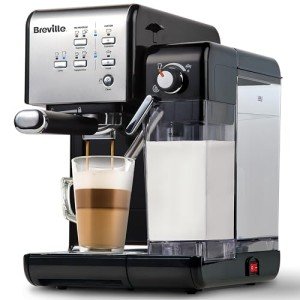The Art of Italian Espresso Machines: A Brewed Tradition
Italian espresso machines are not simply home appliances; they are an essential part of Italy's abundant coffee culture, representing a blend of artistry, engineering, and design. Coffee fanatics around the world recognize the importance of high-quality espresso, a staple of Italian life and food. This post explores the history, mechanics, types, and factors to think about when buying an Italian espresso machine, reflecting the depth of this cherished beverage and its brewing methods.
History of Espresso Machines
The espresso machine's development go back to the early 20th century in Italy, where coffee was not merely a beverage but an essential social routine. The preliminary attempts to brew espresso begun with basic, stove-top models, gradually evolving into intricate machines that might reproduce the perfect brew.
- 1901-- The First Espresso Machine: The very first steam-powered espresso machine, called the "Ideale," was established by Luigi Bezzera. This equipment marked a turning point in espresso brewing.
- 1938-- The Lever Machine: The intro of the lever machine made it simpler to control the pressure used in espresso extraction, improving flavor consistency.
- 1947-- The Automatic Machine: Reaching more consumers, Gaggia released the first automatic espresso machine, more promoting espresso bars.
- 2007-- The Digital Age: Technological improvements led to the birth of fully programmable machines, allowing users to tailor their brewing settings to attain a tailored coffee experience.
Secret Features of Italian Espresso Machines
Italian espresso machines embody precision, workmanship, and development. Here are some key parts that highlight their significance:
| Feature | Description |
|---|---|
| Boiler Type | Determines how heat is generated and kept. Common types consist of single boiler, dual boiler, and heat exchanger. |
| Group Heads | Where the coffee is brewed; commercial machines typically have multiple group heads for effectiveness. |
| Pressure Control | Important for attaining the ideal espresso; most machines run at 9 bars of pressure. |
| Frothing Capabilities | The steam wand permits milk frothing, important for drinks like cappuccino and latte. |
| Build Quality | The products utilized (stainless steel, brass, etc) impact durability and heat retention. |
Types of Italian Espresso Machines
Picking the best machine depends upon user choices, budget, and planned use. Below are the primary types of Italian espresso machines:
Manual Espresso Machines
- Pros: Offer complete control over the brewing procedure, enabling for an individualized touch.
- Cons: Require ability and practice, can be labor-intensive.
Semi-Automatic Machines
- Pros: Provide a balance in between automated and manual procedures; users control water circulation.
- Cons: Can have a steeper learning curve than completely automatic machines.
Fully Automatic Machines
- Pros: Simplify the brewing process with push-button operations; ideal for newbies.
- Cons: May sacrifice some of the nuances of manual developing.
Super-Automatic Machines
- Pros: Grind, tamp, brew, and froth immediately; convenient for busy way of lives.
- Cons: Less control over the brewing variables, potential for a less authentic espresso experience.
Buying Guide: Factors to Consider
Choosing the perfect Italian espresso machine can be difficult, however thinking about the following aspects can streamline the decision-making procedure:
- Budget: Italian espresso machines vary from affordable to high-end designs, so set a budget upfront.
- Usage Frequency: Evaluate how often you will use the machine; day-to-day users might want a more long lasting choice.
- Space: Measure your cooking area or counter space; some machines can be large and need sufficient clearance.
- Upkeep: Consider ease of cleaning; machines with removable parts or integrated cleaning functions may lower maintenance.
- User Skill Level: Beginners may choose totally or semi-automatic machines, while skilled baristas can deal with manual machines.
- Brand Reputation: Research brand names understood for quality, such as Breville, Gaggia, and La Marzocco.
Popular Italian Espresso Machine Brands
Italian workmanship is renowned for producing some of the very best espresso machines worldwide. Here are top brands worth considering:
- Gaggia: Known for its home espresso machines and affordability.
- La Marzocco: An exceptional brand name known for its commercial-grade machines and innovative innovation.
- Rancilio: Renowned for its resilient develop and professional-quality machines ideal for home and commercial use.
- Sage/Breville: Offers advanced functions and easy to use styles, perfect for both beginners and enthusiasts.
FAQs
What is the difference in between espresso and regular coffee?
Espresso is a focused coffee brewed by requiring warm water through finely-ground coffee under pressure. It has a thicker consistency, richer flavor, and greater caffeine concentration than routine coffee.
Can I make milk-based beverages with an espresso machine?
Yes, lots of Italian espresso machines include a steam wand to froth milk for beverages like cappuccinos, lattes, and macchiatos.
How often should I clean my espresso machine?
Regular upkeep is necessary. Generally, Espresso Machines Under £100 is advised every couple of weeks, while descaling should be done every 1 to 3 months, depending upon water firmness.
What is the ideal pressure for brewing espresso?
The ideal pressure for developing espresso is around 9 bars. This pressure makes sure the optimal extraction of flavors from the coffee grounds.
Are more pricey machines worth the investment?
Higher-end machines often make use of much better materials and innovation, providing improved sturdiness and more consistent results. For severe coffee lovers, buying a great machine can raise the espresso experience substantially.
Italian espresso machines are much more than mere brewing devices; they are an event of a cultural custom that has actually influenced coffee consumption worldwide. With various models available to fit any user's requirements-- varying from beginners to experienced baristas-- there is an Italian espresso machine perfectly suited for everyone. As you embark on your espresso journey, comprehending the history, mechanics, and choices will enrich your experience and gratitude for this time-honored drink. Whether you seek to recreate a coffee shop atmosphere in your home or refine your developing strategy, these machines can providing memorable cups of espresso adorned with the abundant history of Italian coffee culture.

